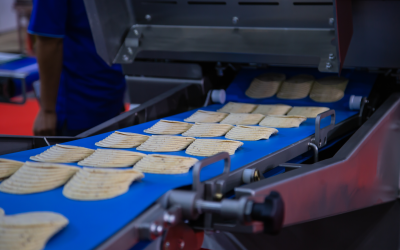There’s a new Food Safety “sheriff” in town–Mindy Brashears PhD–and we’re all wondering what she is going to emphasize during her period of FSIS-USDA service. Her stated intent is to first focus on, “Pathogen control, with an emphasis on Salmonella. We (FSIS) are working on many policies, as well as science-based approaches, to control Salmonella in meat and poultry in new and innovative ways,” (Chuck Jolley, Feedstuffs, July 5, 2019). That’s logical, and needed. Scallan et al. 2011 [Emerging Infectious Diseases 17(1): 36-51] informed us that Salmonella is the second “most likely to make you sick,” first in “most likely to kill you,” and third “most likely to kill you once you get it,” among the most common foodborne pathogens”.
From whence does it come? “Salmonella is prevalent in food, and food animals such as cattle, pigs, and chickens. Eating food contaminated with feces is the most common way that people become infected with Salmonella. In addition, it can be spread by people through cross-contamination and improper hand-hygiene,” (Centers for Disease Control and Prevention, 2019). Snyder et al. 2019 [Journal of Food Protection 82(7): 1191-1199] characterized 2,447 US outbreaks of salmonellosis and found that: (a) frequently implicated foods included eggs (12.5%), chicken (12.4%), and pork (6.5%), and (b) food commodities that were most commonly associated with multistate outbreaks were nuts, seeds, sprouts, and fruits. So, whatever Dr. Brashears does at USDA about Salmonella, she needs to work in concert with her counterparts at USDHHS because FDA regulates eggs, nuts, seeds, sprouts, and fruits. She knows that, and has reported that she is “working closely with Dr. Frank Yiannis (FDA).”
The feces of cattle, pigs, and chickens have been called-out as the culprit by CDC but other animals are also implicated in Salmonella contamination of foods. Smith and Riggs (Texas A&M University, July 12, 2019) summarized research findings by the APHIS-USDA National Wildlife Research Center which revealed that: (a) pathogenic bacteria that can be carried and transmitted by birds and wildlife to agricultural operations cause morbidity in livestock and subsequent illness in humans further along the food chain, (b) resident and/or maintenance hosts for Salmonella spp. and other enteric pathogens include mice, rats, raccoons, deer, elk, and birds (especially European starlings), and (c) rodents, game animals, wildlife, and birds exploit abundant and nutritious food sources (especially on Concentrated Animal Feeding Operations) and–in so doing–contaminate feed (in bunks) and water (in troughs) with Salmonella enterica, (Carlson et al.2011; Journal of Applied Ecology 48: 479-486). Taylor et al. 2015 (Proc. Beef Industry Safety Summit, Dallas, TX) reported presence of Salmonella spp. in 18.5% of South Texas feedlots; 10% were recovered from feed, 60% from soil, 10% from feces, and 20% from drinking water.
At the packer/processor level, meat and poultry companies have employed extensive microbiological interventions including: SOPs; GMPs; Sanitary Dressing Procedures; hot-water washes; chemical-solution rinses or sprays (e.g., acetic acid, lactic acid, peroxyacetic acid, acidified sodium chlorite, trisodium phosphate, cetylpyridinium chloride); diversion of high-risk materials; and proper chilling for fresh meat and poultry. For ready-to-eat products, strategies like risk zones, environmental contamination determinations, thermal processing, and high pressure processing have been employed to mitigate risk.
In cattle, it was initially thought that the Salmonella on and in beef products was from surface contamination that originated from the hide and intestinal tract, but Bosilevac et al. 2009 (App. Environ. Microbiol 75: 1892-1900) reported that Salmonella prevalence in ground beef was 4.2% vs. 0.8% on carcass surfaces. Subsequently, at least some of that disparity was traced to Salmonella located in peripheral lymph nodes–within intermuscular adipose tissue (i.e., seam fat). Attempts to determine how Salmonella find respite in lymph nodes relates–somehow– to the fact that Salmonella prevalence in peripheral lymph nodes from cattle in different feedlot environments differs dramatically depending on relative levels of Salmonella in/on feed, water, pen-surface materials, and hides of cohorts within the same pens, (Smith and Arnold, FSNS® Quarterly Newsletter, March 2016). Inclusion of direct-fed microbials (Brichta-Harhay et al. 2014; International Association of Food Protection, Abstract) in cattle diets has shown promise for reducing Salmonella prevalence in peripheral lymph nodes, but an attempt to develop a vaccine has not. Cernicchiaroet al. 2016; Foodborne Pathogens and Disease 13(9): 1-22) reported that a Salmonella SRP vaccine was not effective at reducing lymph node contamination in commercial feedlot cattle. Though some beef processors presently extract three to six of the major peripheral lymph nodes (popliteal, subiliac, superficial cervical, axillary, coxal, and iliofemoral) from beef trimmings during fabrication, more of the peripheral lymph nodes might need to be extracted, and more processors might need to adopt such extraction practice, (Smith and Arnold, 2016).
The Economic Research Service (ERS-USDA) concluded that, each year, foodborne illnesses cost the US economy more than $15.6 billion, cause 8.9 million cases, send 53,245 persons to hospitals, and take the lives of 2,377; Number 1 among major foodborne pathogens is nontyphoidal Salmonella at a cost of $3.7 billion, (Dan Flynn, Food Safety News, October 9, 2014). Such reports incite others to demand that all or some Salmonella be classified an “adulterant”. An article in the Los Angeles Times (October 13, 2013) said, “At a minimum, we could declare Salmonella an adulterant so that USDA and agricultural operations are compelled to recall infected product. An article in The Guardian declared that the US federal government has not declared Salmonella an adulterant which allows chicken with Salmonella to be sold in US stores, (Erica Shaffer, Meat + Poultry, February 22, 2018). US Public Interest Research Group (USPIRG) said the US government “should declare antibiotic-resistant strains of Salmonella as an adulterant in meat and poultry,” (Institute of Food Technologists, The Weekly, January 23, 2019).
But, it seems highly unlikely that the government would make Salmonella an adulterant. Why? Because Salmonella is ubiquitous in Earth’s environment as a result of its prevalence in the feces of essentially all animals–humans, livestock, birds, wildlife. Meat and poultry processors try their hardest, but presence of Salmonella within processing plants and on food products is unpredictable, episodic, and almost impossible to completely control. Some Salmonella slip through the net but most are killed via pasteurization (milk), cooking (meat, poultry, eggs) or canning. “There is no ‘kill-step’ when processing fruits and vegetables (and much of it is eaten raw); so, our only option is to take steps to reduce pathogen counts and minimize cross-contamination,” (Doug Grant, The Packer, December 21, 2018). So, if Salmonella was declared an adulterant in meat and poultry, it would also need to be declared an adulterant in the other 80% of US food that is regulated by FDA. If Salmonella is deemed an adulterant, it portends a near-certain impossibility for the US to provide adequate nourishment for its citizens.
To “control Salmonella in meat and poultry in new and innovative ways,” as suggested by Dr. Brashears, we could attack comprehensively, or at delineated junctures in the supply-chain. Whatever is our approach, those in production and processing sectors, consumers, and regulators will be better informed of pathogen prevalence via whole genome sequencing, (Dow-Jones Factiva, December 10, 2018). Some have recommended that we attack comprehensively: (a) Baer et al. 2013 (Comprehensive Reviews of Food Science and Food Safety 12: 183-217) says Salmonella can be reduced through on-farm strategies, hygienic slaughter practices, and processing techniques. (b) An article in Los Angeles Times (October 21, 2013) claims Sweden has virtually eliminated Salmonella in store-bought chicken by using microbiological testing at multiple key production points, inspection of clean-up protocols, banning shipments from producers that are not Salmonella-free, etc. (c) Sandra Eskin (The Pew Charitable Trust, October 3, 2018) recommends vaccination of broiler-breeder flocks, strong hygienic practices, vermin control, quarantine procedures, biosecurity measures, and comprehensive microbial testing programs for carcasses. (d) The Pew Charitable Trust (May 28, 2019) reported that Sweden, Finland, Norway, and Denmark have implemented successful food safety control programs to reduce Salmonella contamination on poultry and swine. These countries require strict, on-farm biosecurity measures including cleaning and disinfecting animal housing, extensive microbiological testing and monitoring for Salmonella in the animals and feed, culling of infected breeding animals, and separate handling of Salmonella-positive flocks or herds at slaughter.
Others have focused on preharvest solutions: (a) USDA’s National Organic Program (2016) has emphasized raw manure handling Guidance for control of Salmonella in feedstuffs. (b) Salmonella infections in broiler-breeder chicken flocks and breeder pig herds can be transmitted to chicks and piglets, underscoring the need for efficient control measures–like vaccines–earlier in the production chain, [European Food Safety Authority, 2010; EFSA Journal 8(4): 1547]. (c) The Pew Charitable Trust (2018) says, “A comprehensive approach to tackle foodborne illnesses must begin at the farm level, with probiotics and vaccines, to reduce Salmonella in livestock. (d) The National Advisory Committee on Microbiological Criteria for Foods (2018) recommended improved poultry vaccines for pathogenic mircoorganisms. (e) USDA scientists, in 2019, have proven efficacy for addition of sodium chlorate to the water and feed of livestock to kill Salmonella Typhimurium (Erica Shaffer, Meat + Poultry, May 30, 2019). (f) Consider screening H-2A workers for microbes, viruses, and parasites before they enter the US, as suggested by Fresh Express™ (June 24, 2019).
At the harvest level, FSIS has–historically–tried to regulate Salmonella contamination on meat and poultry carcasses. Among the four essential elements of “The Final Rule on Pathogen Reduction and Hazard Analysis and Critical Control Point Systems (July 1996) was, “Plants must meet Pathogen Reduction Performance Standards, set by FSIS-USDA, for Salmonella. After that part of the regulation was nullified in the Supreme Beef Company™ litigation of 2000, the FSIS Salmonella Initiative (May 2008) resurrected the Performance Standards in the form of a categorization system. It is a “Buyer Beware” notification whereby any establishment that has a Category 2 or 3 Salmonella incidence score may have its name, establishment number, and Salmonella score posted on the Agency’s website. FSIS could consider minor modifications of the Performance Standards categorization process (e.g., using a Non-Conformity/Corrective Action validation protocol) to improve the Salmonella status and website listing of an establishment. Martin Wiedmann PhD (Cornell University) says that, “To control Salmonella, industry needs to think differently about FSIS Performance Standards (which considers ‘all serotypes to be equal’ in importance) vs. considering certain serotypes or strains (e.g., Salmonella Newport for beef, Salmonella Enteriditis for eggs, Salmonella Heidelberg for chickens, etc., or any Salmonella that is MDR) more important than others, so that industry has the motivation to focus on the organisms most likely to cause human disease,” (Julie Larson Bricher, Meatingplace, May 2019). There have been substantive discussions of identifying “Top 3” or “Top 5” Salmonella serotypes of greatest concern, by animal-source or product-category, and assigning them elevated status–either as a potential “adulterants” or in determining the Category 1, 2, or 3 establishment score. If either of those ideas materialized, such lists would need constant oversight and readily adaptable listings because–over time– problematic dominant serotypes and/or strains change. Other possibilities for fine-tuning include holding more executives of companies accountable. The “Park Doctrine” was used to impose as 28-year prison sentence on the owner of Peanut Corporation of America™ for shipping products known to be contaminated with Salmonella. Or, final product testing; Cargill™ subjects 100% of its ground turkey products to a “test-and-hold” procedure before product release.
And, what about consumer education?: (a) CDC (2015) issued “Tips For Avoiding Salmonella While Preparing Foods”. (b) CDC, in 2019, warned people, “You can get sick from Salmonella simply by touching poultry or the bird’s environment”. (c) An Arizona federal court jury attributed 30% of the fault, in its decision, to Foster Farms™ and 70% to family members for their preparation (handling, cooking, serving) of some chicken that caused brain injury to a 5-year-old child. (d) Shawn Stevens JD (Meatingplace, July 22, 2019) said, “I’m not advocating for a ‘just cook it’ campaign as consumer education. That’s overly simplistic and fails to address the real cause of foodborne illness. Now is the time for industry, advocacy groups, and government to pool their resources, and partner on a ‘scorched earth food safety campaign’”. (e) We now know that Dr. Brashears is “working closely with Dr. Frank Yiannis (FDA), as we plan to partner with stakeholders to identify how consumers are mishandling foods and also to develop educational programs that can actually result in behavior changes,” (Chuck Jolley, Feedstuffs, July 5, 2019).
As I “read the tea leaves,” I doubt that Salmonella will be declared an adulterant (that’s too big a bite of the apple) because it would have devastating effects on our country’s ability to nourish our people. My suggestions would be: (1) Go after the birds, rodents, and wildlife. (2) Promote biosecurity diligence on the part of growers. (3) Consider mandating removal of all six major lymph nodes from beef trimmings. (4) Maintain existing FSIS Salmonella Performance Standards but examine opportunities to fine-tune them. (5) Revisit the potential for electron-beam pasteurization without label declaration, and (6) Consider Shawn Stevens “Scorched Earth” approach (Meatingplace, July 22, 2019) to consumer education on food safety. USDA Secretary Sonny Purdue has an Agency’ motto–“Do right and feed everyone.” Mindy Brashers says, “For FSIS, the motto should be, ‘Do right and feed everyone–safely’,” (Kimberlie Clyma, Meat + Poultry, July 26, 2019).



